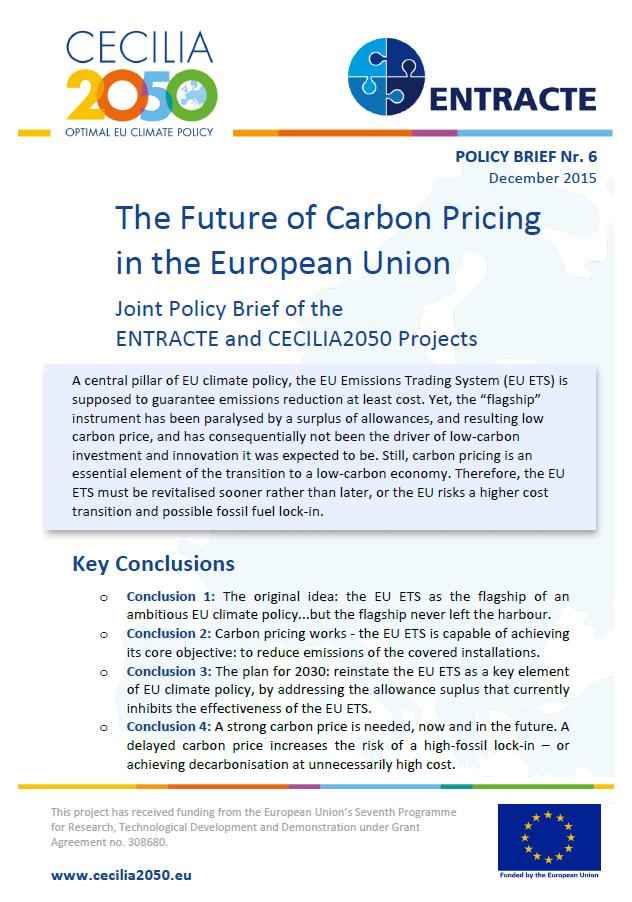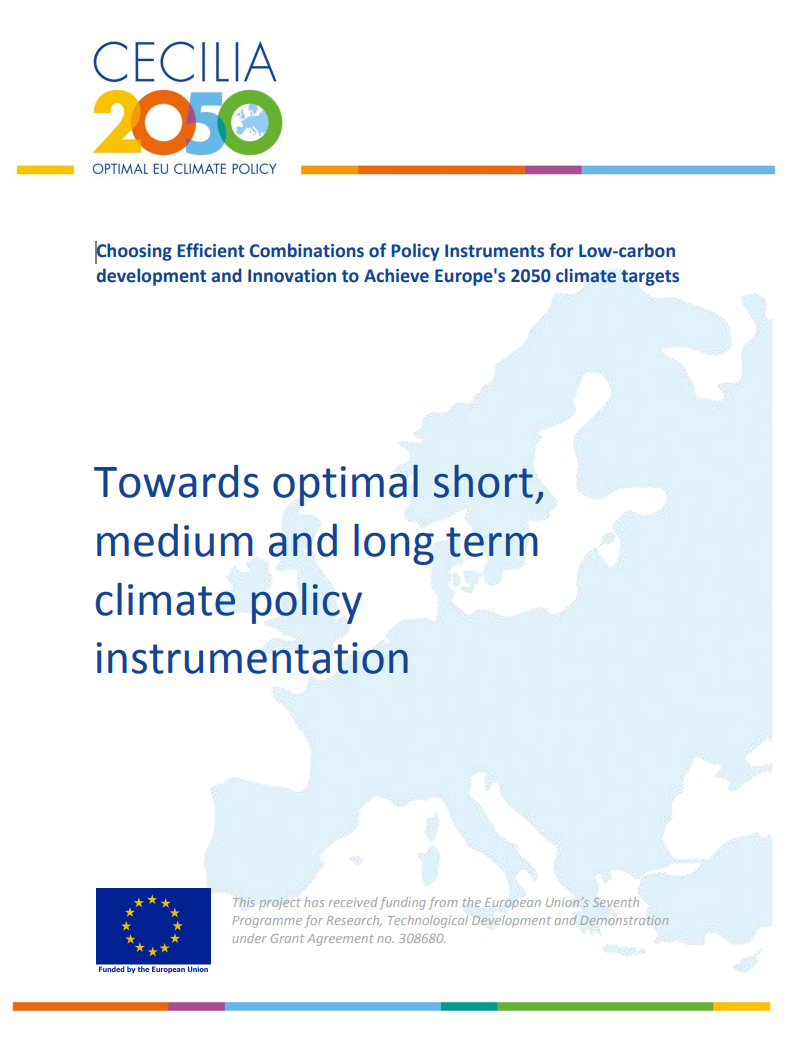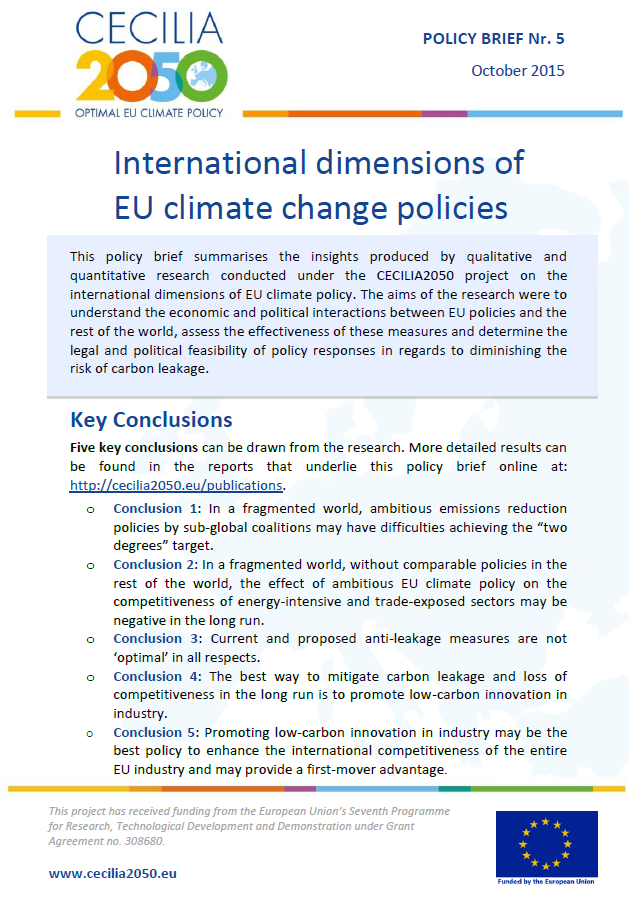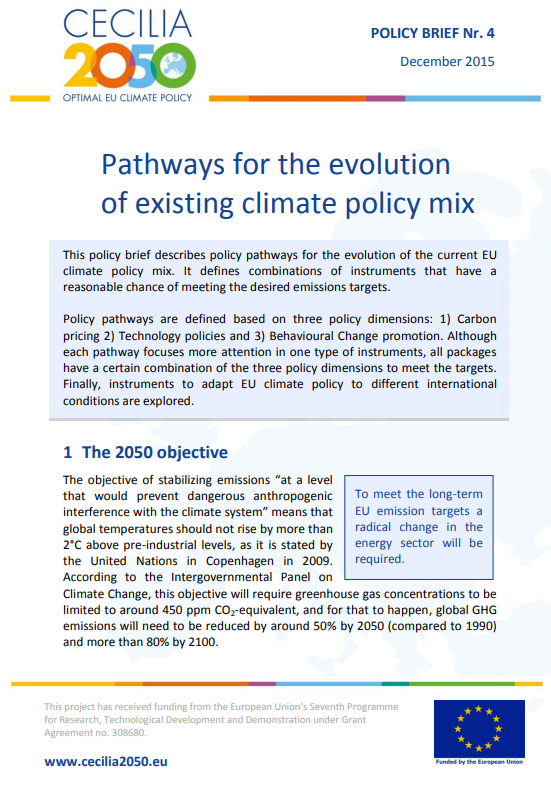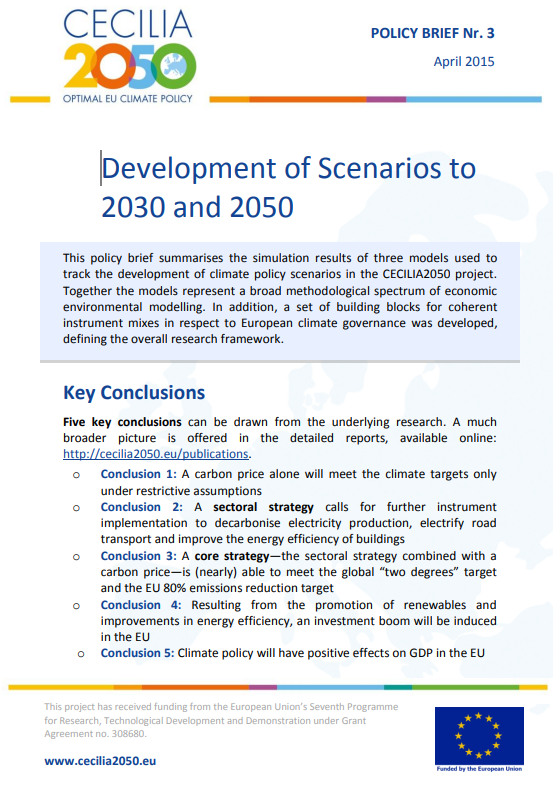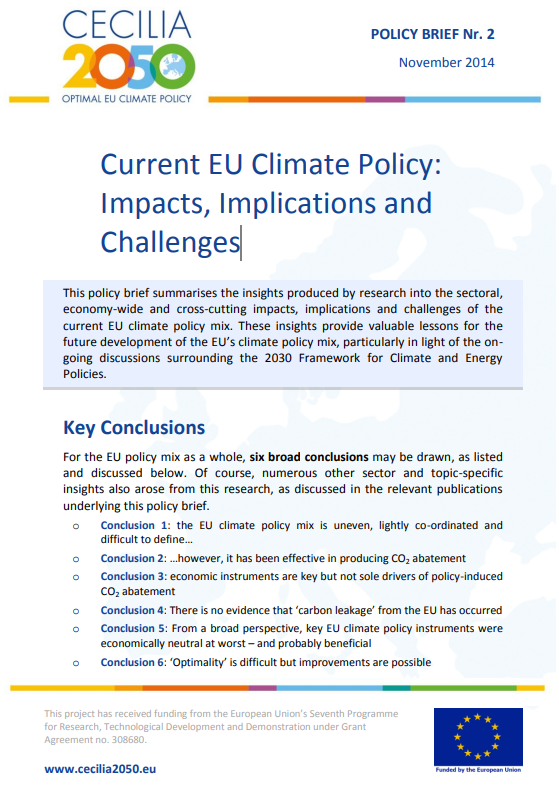European Governance and the Low-Carbon Pathway
Analysis of challenges and opportunities arising from overlaps between climate and energy policy and from centralisation of climate policies
- Publication
- Citation
Bausch, Camilla et al.. 2015. European governance and the low-carbon pathway: Analysis of challenges and opportunities arising from overlaps between climate and energy policy as well as from centralisation of climate policies. CECILIA2050 WP4 Deliverable 4.2. Berlin: Ecologic Institute.
Bausch, Camilla et al.. 2015. European governance and the low-carbon pathway: Analysis of challenges and opportunities arising from overlaps between climate and energy policy as well as from centralisation of climate policies. CECILIA2050 WP4 Deliverable 4.2. Berlin: Ecologic Institute.
- Language
-
English
- Authorship
- Funding
-
European Commission, Directorate-General Research & Innovation (DG Research & Innovation), International - Published by
-
Ecologic Institute, Germany - Year
- Dimension
- 108 pp.
- Project
- Project ID
- Table of contents
-
Click to show full table of contents
1 Executive Summary
2 Introduction
2.1 Guiding parameters: EU emission reduction targets for 2030 and 2050
2.2 Status Quo – EU framework for energy and climate policy
2.2.1 Legal foundation
2.2.2 Areas of EU competence
2.2.3 Categories of competences: the EU and Member States
2.2.4 Decision-making
2.2.5 Choosing the legal basis for action
2.2.6 Competition law and State Aid rules
3 Part I: How to address overlaps between climate and energy policies at the EU level
3.1 The policy integration concept
3.1.1 Brief historical background
3.1.2 Different levels of integration – weak, strong, very strong level of integration
3.2 Climate policy integration at the EU level
3.2.1 Reflection on climate policy integration at the legal level
3.2.2 Reflection on climate policy integration in official environmental, climate and energy-related documents
3.2.3 Summary
3.3 Overlaps between climate and energy: two examples for the current climate and energy debate
3.3.1 A joint Commissioner for Climate Action and Energy and a new Vice President for Energy Union
3.3.2 A policy framework for climate and energy in the period from 2020 to 2030
3.4 Prioritisation of climate change in the EU legal and institutional framework: possible options
3.4.1 What priority do climate protection objectives have at the EU level?
3.4.2 At which levels could the mitigation of climate change be prioritised?
3.5 Conclusions and recommendations
4 Part II: How to serve climate protection best: centralised versus decentralised policies?
4.1 Guiding questions
4.2 Definitions: Centralisation, plurilateral cooperation, decentralisation
4.3 Advantages and disadvantages of centralisation and decentralisation
4.4 Who can drive centralisation/decentralisation how and why?
4.4.1 EU primary law
4.4.2 State actors who can drive centralisation/decentralisation of policies
4.4.3 Drivers for centralisation - international relations perspectives
4.5 Centralisation and decentralisation as defining struggle in the EU
4.5.1 Brief history of centralisation trends in climate policies
4.5.2 Recent developments
4.6 Detailed look at core policies from a centralisation/decentralisation perspective
4.6.1 EU Emission Trading Scheme
4.6.2 Prominent renewable energy policies, with a focus on electricity
4.6.3 Development of the electricity grid infrastructure
4.6.4 Target setting
4.7 Conclusions and recommendations
4.7.1 What should be considered in the context of a climate policy choice and design?
4.7.2 Policies that should be centralised
4.7.3 Centralised policies and international politics
5 Annex: The subsidiarity principle
5.1 Meaning and scope
5.2 Enforcement of the subsidiarity principle
5.3 The subsidiarity principle and centralisation/decentralisation
5.4 Conclusions
6 Literature
7 Interviews
7.1 Single Interviews
7.2 Interview Series - Keywords
-
CECILIA2050, climate policy, carbon pricing, private transport, greenhouse gas reduction, emissions, taxes, air pollution, climate changeEU, European Union
Görlach, Benjamin. 2013. What constitutes an optimal climate policy mix? Defining the concept of optimality, including political and legal framework conditions. CECILIA2050 WP1 Deliverable 1.1. Berlin: Ecologic Institute.
Görlach, Benjamin; Homann, Gesa; Wawer, Tim. 2013. Country report: Germany. Contribution to CECILIA2050 Deliverable 1.2: Review of the existing instrument mix at EU level and in selected Member States. Berlin: Ecologic Institute
Combining Policy Instruments to Achieve Europe's 2050 Climate Targets (CECILIA2050)
- Duration
-
-
- Funding
-
European Commission, Directorate-General Research & Innovation (DG Research & Innovation), International
Máca, Vojtěch et al. 2013: Climate Policies and the Transport Sector. Analysis of Policy Instruments, their Interactions, Barriers and Constraints, and Resulting Effects on Consumer Behaviour.
